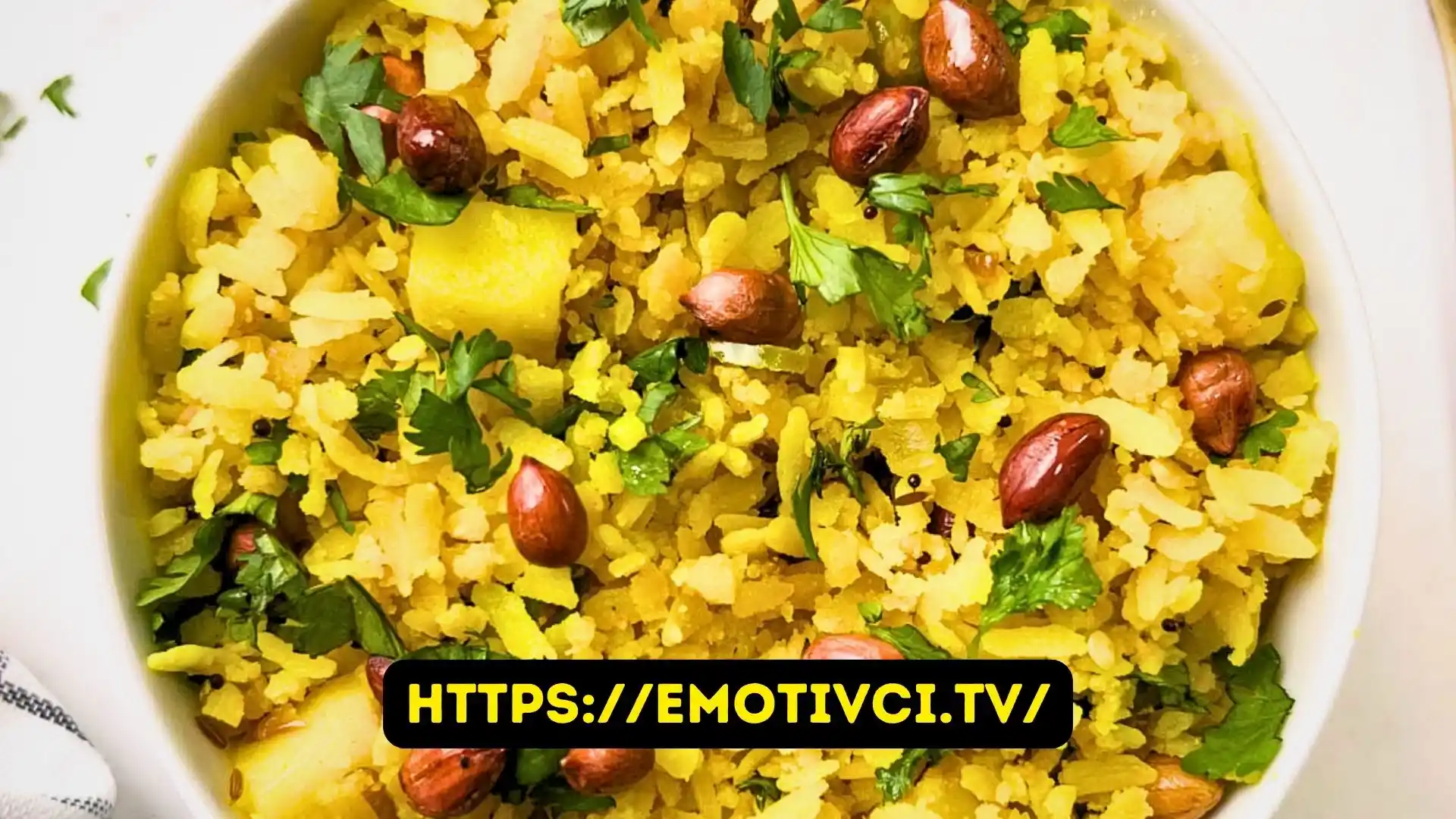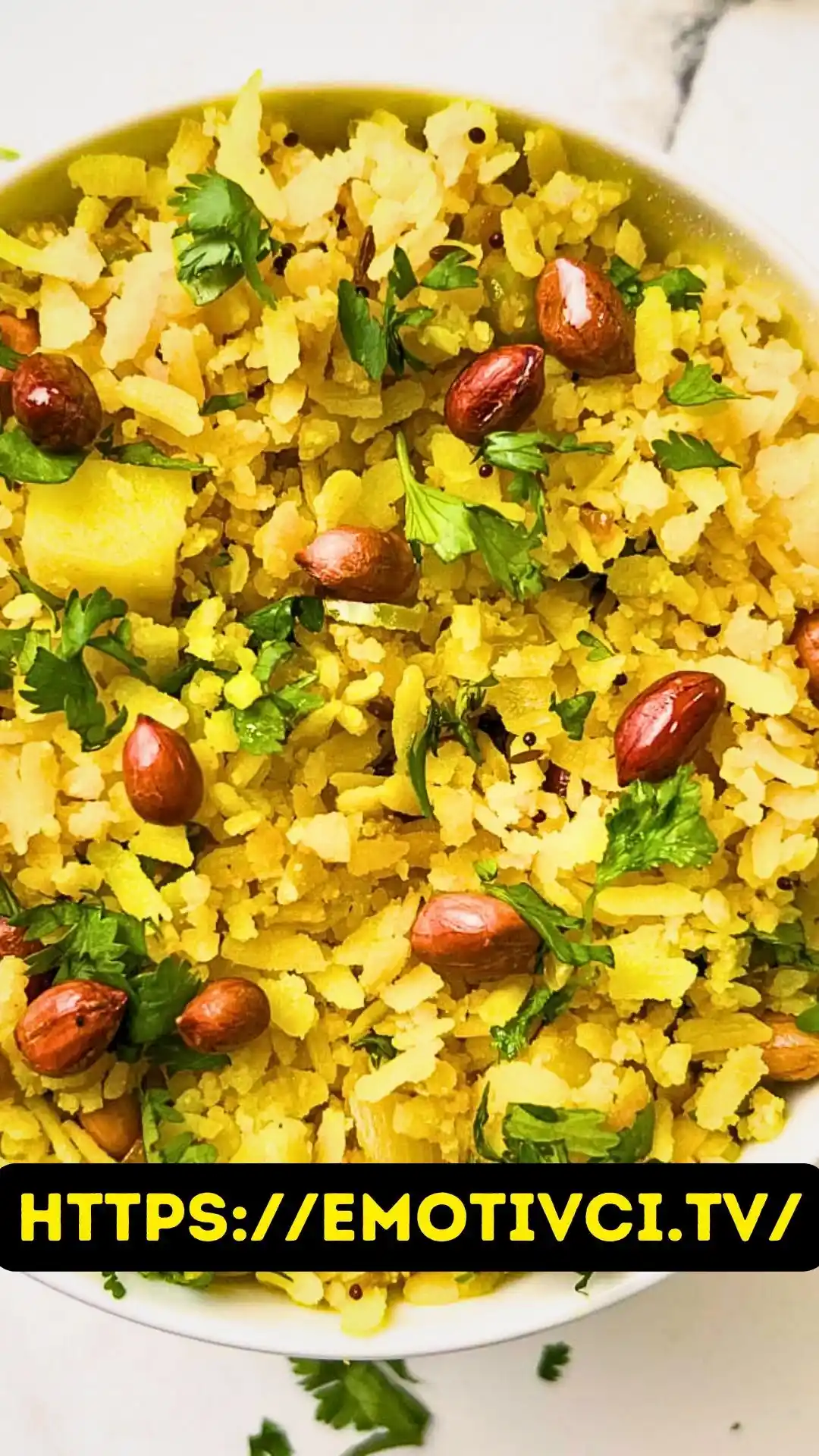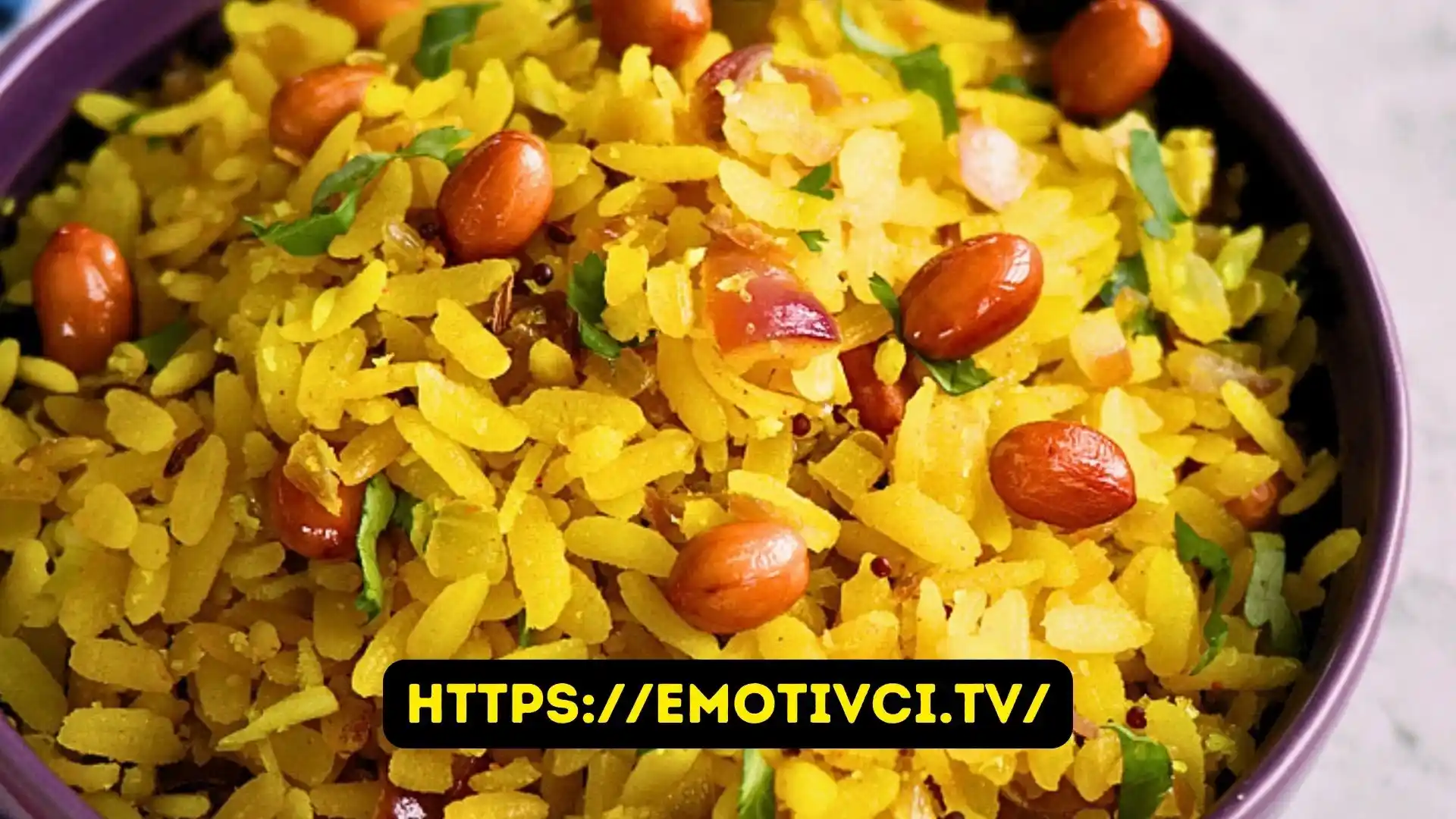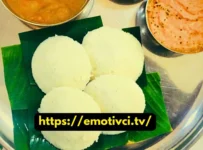A Delectable Indian Breakfast Staple: The Versatile Poha
Poha, also known as rice flakes or flattened rice, is a versatile Indian breakfast and snack staple prepared from rice. With its light and fluffy texture, poha is a refreshing and comforting meal any day.

This ancient dish likely originated in the Indian state of Maharashtra but is now beloved across the country. Poha can be whipped up in a jiffy while retaining a delightful complexity of flavors. It strikes a perfect balance between sweet, spicy, and tangy.
In this extensive guide, we uncover everything there is to know about poha – from its origins to the different ways to cook it. We’ve also included two mouthwatering poha recipes you can recreate in your kitchen. Let’s get cracking!
A Brief History of Poha and How It’s Made
Poha has long been a part of India’s culinary tradition. Its earliest mentions date back to 12th-century ancient Indian Ayurvedic texts.
To make poha, rice is first parboiled before being rolled into flat flakes. This process enables the rice to be dried easily while improving its shelf life. ‘poha’ comes from the word ‘poly,’ meaning ‘puffed rice’ in Tamil.
Over the centuries, countless poha variants have emerged across India featuring regional ingredients and flavors. Each recipe is unique, from the spicy potato poha of Maharashtra to the coconutty Konkani poha.
Not only is poha simple to prepare, but it also makes an excellent nutritional choice. Here’s a quick look at some of its many health benefits:
- Since it’s made from rice that has been parboiled, poha manages to retain many of the grain’s nutrients, especially its B vitamins.
- Has a low glycemic index, meaning it won’t cause sharp spikes in blood sugar levels. This makes it suitable for people with diabetes.
- Provides complex carbs for an energizing start to the day or a satiating snack at any time.
- High in resistant starch promotes gut health and keeps you full longer.
- With such stellar nutritional stats, it’s no wonder poha continues to be one of India’s most cherished everyday foods.
Regional Variations of Poha Across India
While poha is enjoyed all over the Indian subcontinent, the dish takes on a distinct regional flair wherever you travel. Here is a glimpse at some of the most iconic regional poha preparations found in India:
Maharashtrian Poha
This is the OG poha – the mouthwatering Maharashtrian kanda pohe made with onion and potato. Other popular versions use matki (sprouted moth beans) or batata (sweet potato).
The poha is first rinsed to remove starch before tossing it with turmeric, chili, and salt. It is then stir-fried along with the classic Maharashtrian goda masala. Finally, it is topped with lemon, cilantro, crunchy sev, and fresh coconut.
Indori Poha
Hailing from Madhya Pradesh, Indori poha is kissed with the sweet warmth of cinnamon, cloves, fennel, black cardamom,th curry leav, es, and peanuts. This aromatic combo lends it a sublime flavor.
The poha is cooked in minimal oil and served as is or garnished with peanuts, coriander leaves, finely chopped onions, and lemon wedges. Indori poha makes for a rich and heady breakfast.
Gujarati Poha
This preparation uses thick poha seasoned with a medley of sugar, black salt, turmeric powder, roasted cumin powder, crushed peanuts, and grated coconut. The Gujarati spin yields a more dessert-like poha bursting with nutty-sweet goodness.
Konkani Poha
In India’s western coastal region, poha takes on tropical overtones with the addition of freshly grated coconut. Konkani poha may also incorporate seasonal veggies like cucumber, carrots, and raw mango tossed with coconut milk, mustard seeds, and curry leaves.
The Best Poha to Use for Cooking
With so many types of poha out there, it can get confusing to figure out which one works best. As a general rule of thumb, thicker poha is ideal for cooking, while thinner poha is better enjoyed raw.
Here is a handy breakdown of the different kinds of poha and their best uses:
Thick Poha
The thick, broad flakes can withstand cooking without turning mushy. Thick poha works great whether stir-frying, steaming, or making poha bhaji.
Medium or Classic Poha
With medium-sized flakes, this is the most commonly used poha for cooking. It strikes the best balance between getting perfectly tender and retaining some bite after cooking.
Thin or Fine Poha
These tiny, thin flakes are best used in no-cook recipes or eaten raw after being seasoned, as cooking will cause them to disintegrate.
In addition to size and thickness, poha flakes also differ based on processing.
Sada Poha
Sada means plain. True to its name, sada poha undergoes minimal processing. It has a lovely pale cream shade and makes a great choice for cooking.
Fried Poha
As the name suggests, this poha variety is lightly fried in oil during production before being dried and flattened. It lends a deeper, golden color and nuttier flavor to dishes.
Now that you’re acquainted with this chameleon-like breakfast staple let’s learn how to cook it at home in two mouthwatering ways.

Recipe 1: Lip-Smacking Maharashtrian Kanda Batata Poha
This classic Maharashtrian poha preparation featuring potato and onion makes for a flavorsome start to the day. Feel free to switch up the veggies depending on availability and personal preference.
Ingredients
• 2 cups medium thick poha (flattened rice)
• 3 medium potatoes, peeled and chopped
• 1 medium onion, finely chopped
• 1 large tomato, finely chopped
• 2 green chilies, minced
• Handful of curry leaves
• 1 teaspoon lemon juice
• 2 pinches of turmeric powder
• 1 teaspoon salt
• 2 tablespoons vegetable oil
• 1 teaspoon mustard seeds
• 1⁄2 cup roasted peanuts for garnish
Cooking Steps
Step 1
Rinse the poha under running water in a colander. Drain thoroughly. Transfer to a bowl, breaking up any lumps with your fingers. Set aside for 5 minutes to soften.
Step 2
Heat oil in a skillet over medium flame. Add the mustard seeds and let them crackle.
Step 3
Next, add the green chilies, onions and curry leaves. Sauté until the onions turn translucent.
Step 4
Add chopped potatoes and turmeric powder, followed by a sprinkle of water. Cover and cook for 5 minutes until the potatoes are tender.
Step 5
Stir in the softened poha along with salt and tomato. Mix gently and cook uncovered for 2-3 minutes, allowing the flavors to mingle.
Step 6
Finish off with lemon juice and mix well. Serve the poha warm, garnished with roasted peanuts.
This versatile potato and onion poha makes for a quick, wholesome breakfast. You can pack it for a satisfying lunch on busy days, too.
Recipe 2: Dadpe Poha – A Raw Konkani Delight
Dadpe poha holds a special place in India’s Konkan coastal region. Unlike the Maharashtrian potato poha, it is made by soaking poha in coconut and spices without cooking it. This no-cook spin yields incredibly soft, fluffy poha flecked with delightful bursts of flavor.
Ingredients
- 2 cups thin poha flakes
- 1 small onion, minced
- 1 medium tomato, finely chopped
- 2 green chilies, chopped
- Juice of 1 lemon
- 3⁄4 cup fresh grated coconut
- 1⁄3 cup chopped cilantro
- 1 teaspoon sugar
- Salt to taste
For Tempering
- 1 tablespoon vegetable oil
- 1 teaspoon mustard seeds
- Pinch hing (asafoetida)
- 1 sprig of curry leaves
- 2 dried red chilies
- 1⁄4 cup roasted peanuts
Cooking Steps
Step 1
Rinse the poha under running water before placing it in a large bowl. Add the onion, tomato, green chilies, lemon juice, cilantro, sugar, and salt.
Step 2
Next, sprinkle the grated coconut over the poha, followed by 2-3 tablespoons of water. Mix gently with your hands, coating all the ingredients together. Allow to rest for 5 minutes.
Step 3
Mix tempering by heating oil in a small pan over a medium flame. Add the mustard seeds and let them crackle. Next, add the dried red chilies, hing, curry leaves and allow to sizzle for 10-15 seconds.
Step 4
Scrape the tempering over the poha. Mix gently before topping with roasted peanuts. Serve up this sweet, citrusy poha and enjoy its magical medley of textures and flavors!
Tips for Making the Perfect Plate of Poha Every Time
Follow these handy pro tips for cooking up fabulous poha in your kitchen:
Choosing the Right Poha
- Pick poha flakes matching the recipe’s specifications. Broad, thick poha is best for cooking, while thin poha works well in raw preparations.
Washing the Poha
- Avoid over-soaking thin or medium poha as it causes them to get mushy. Give just 2-3 quick rinses under running water before use.
Testing for Doneness
- Check if the rinsed poha flakes have softened enough by pressing a small pinch between your fingers to see if they squash easily. Sprinkle extra water if still stiff.
Adding Veggies
- Feel free to throw mixed veggies like carrots, beans, peas, or cabbage to make your poha more wholesome.
Amp Up Texture
- Crunchy toppings like roasted peanuts, boondi, or chili garlic chutney make poha extra special. Play around with contrasting textures.
Storing Leftover Poha
- To enjoy poha for up to 3 days after cooking, transfer leftover poha into an airtight container and refrigerate immediately.

You’ll be dishing up flavorful poha by mastering these simple tricks in no time. Now that you’re excited about this wonderful Indian breakfast staple, when will you cook up your first batch?
Which delectable poha recipe will you start with? Share your experiences whipping up this classic in the comments below!





